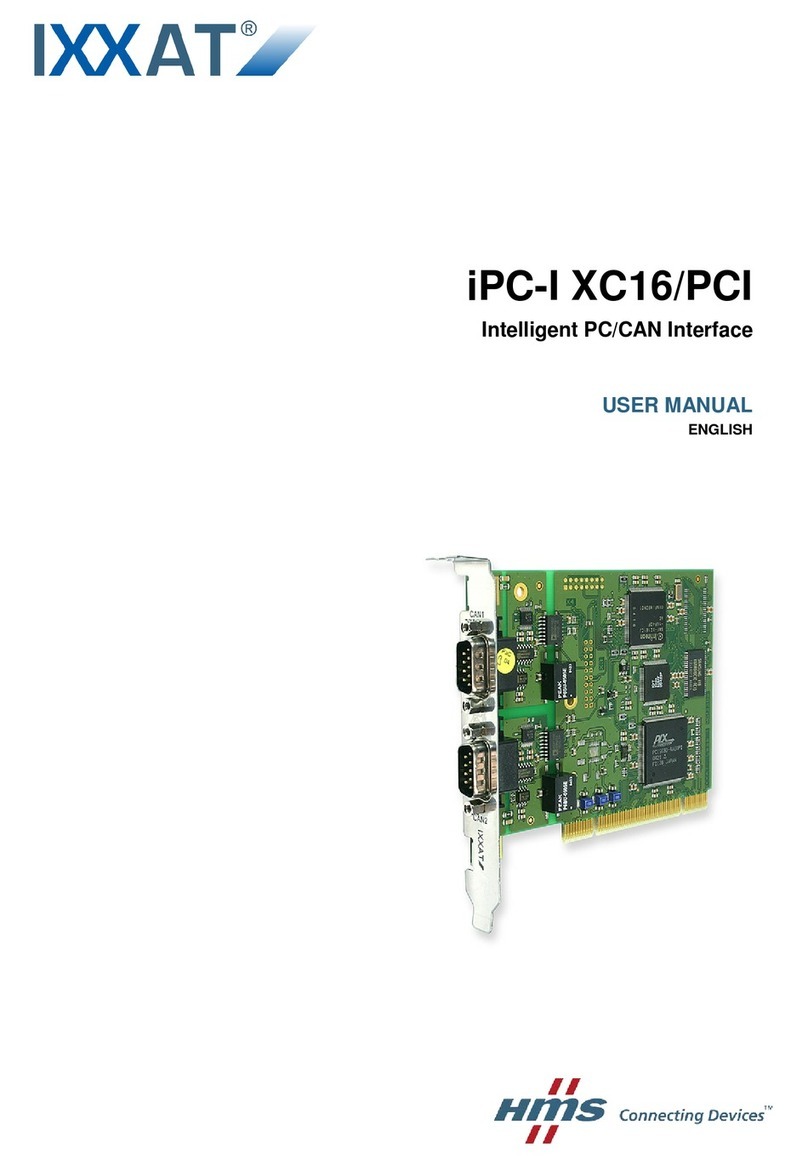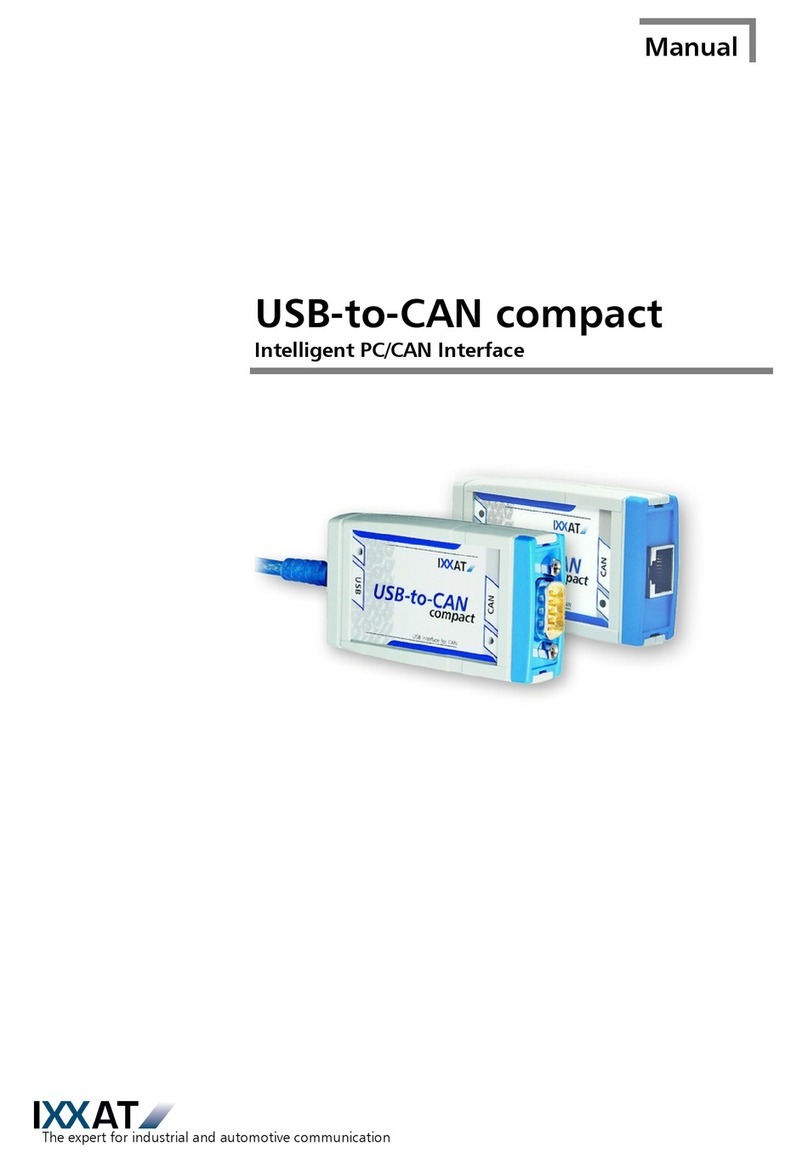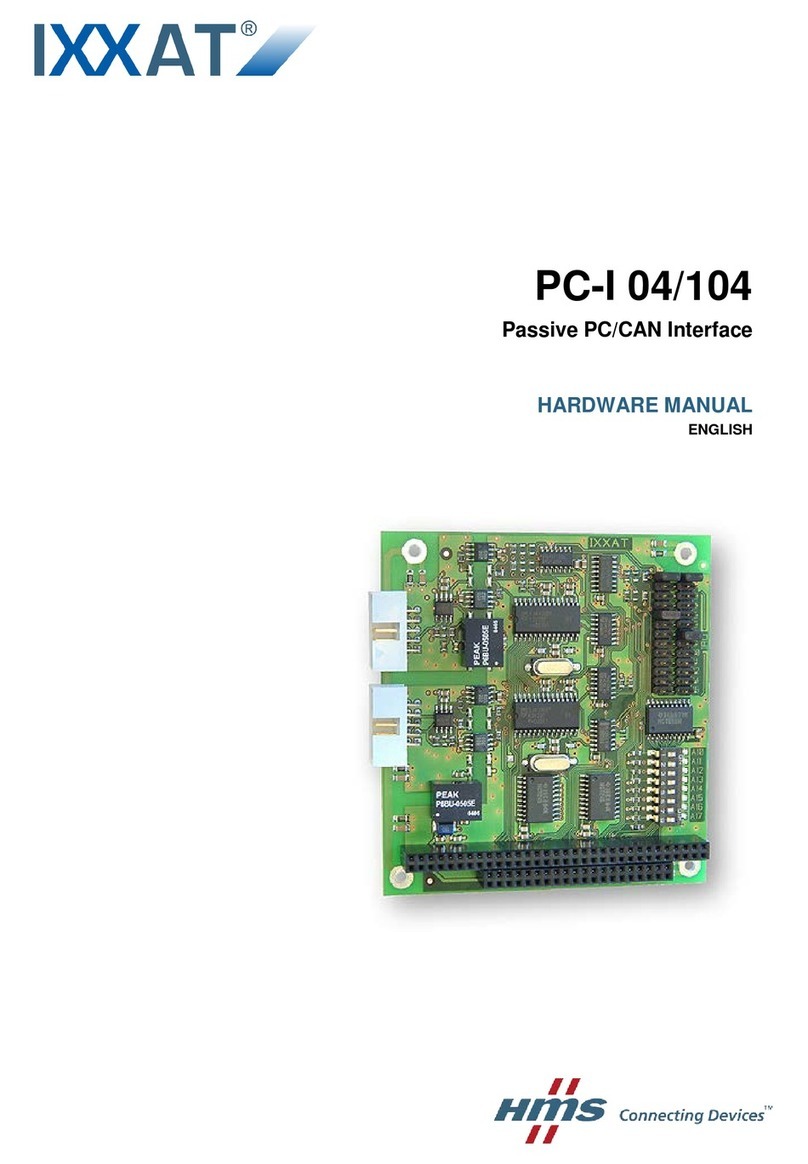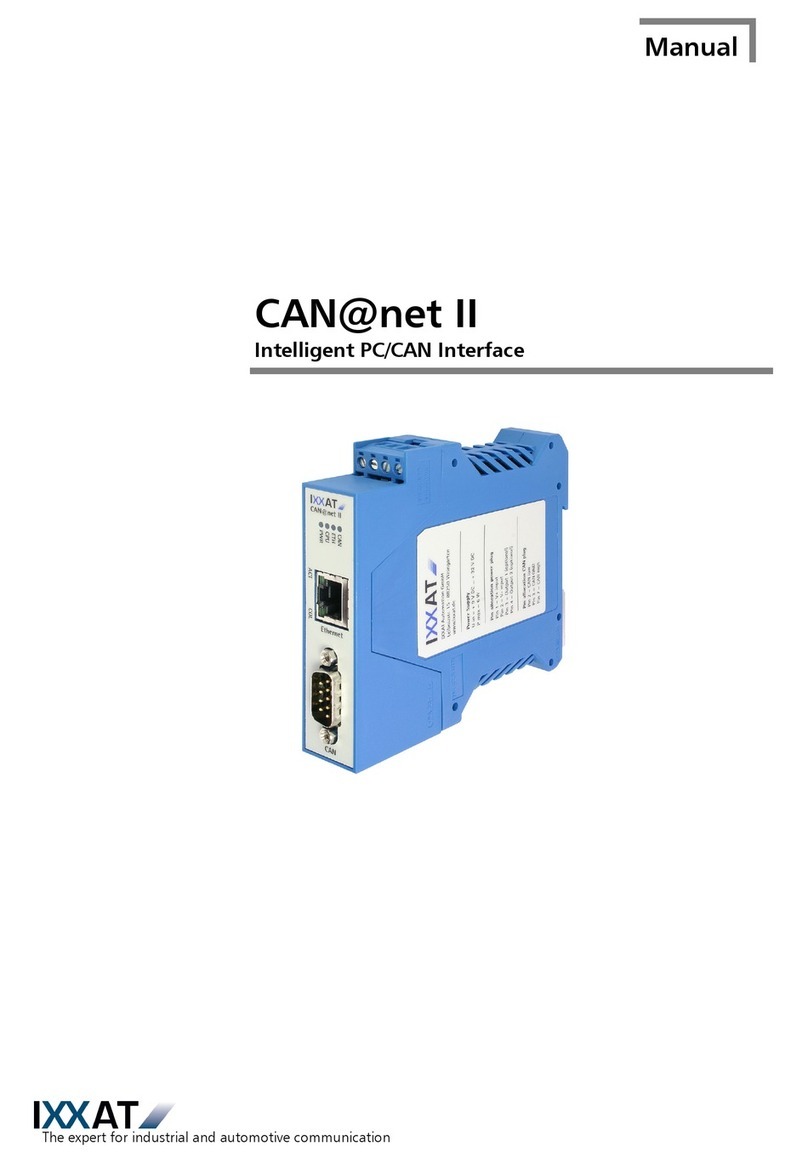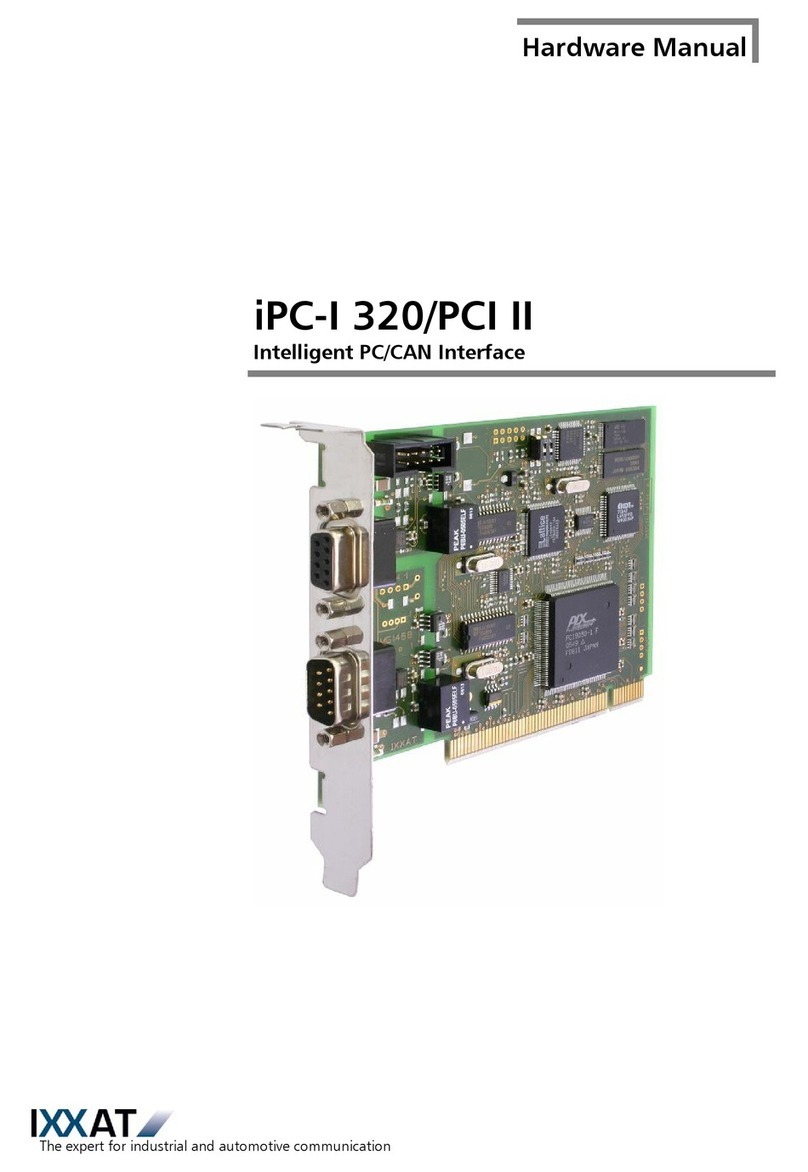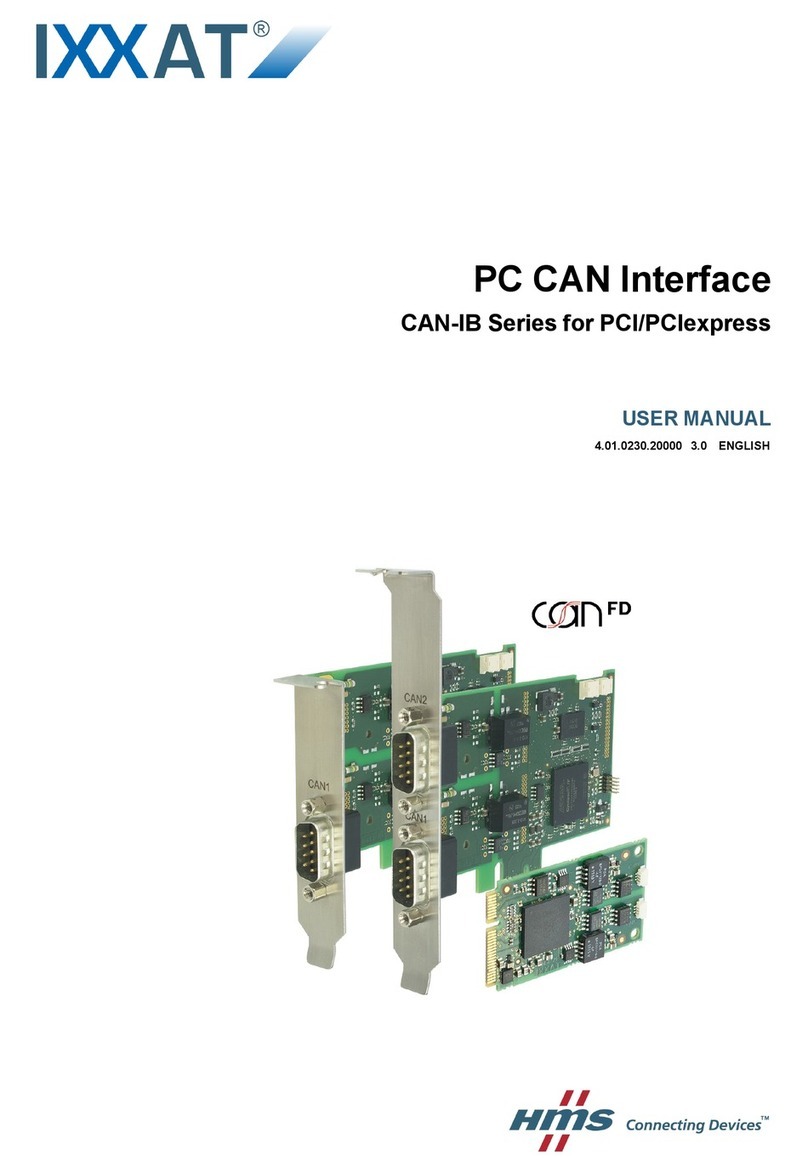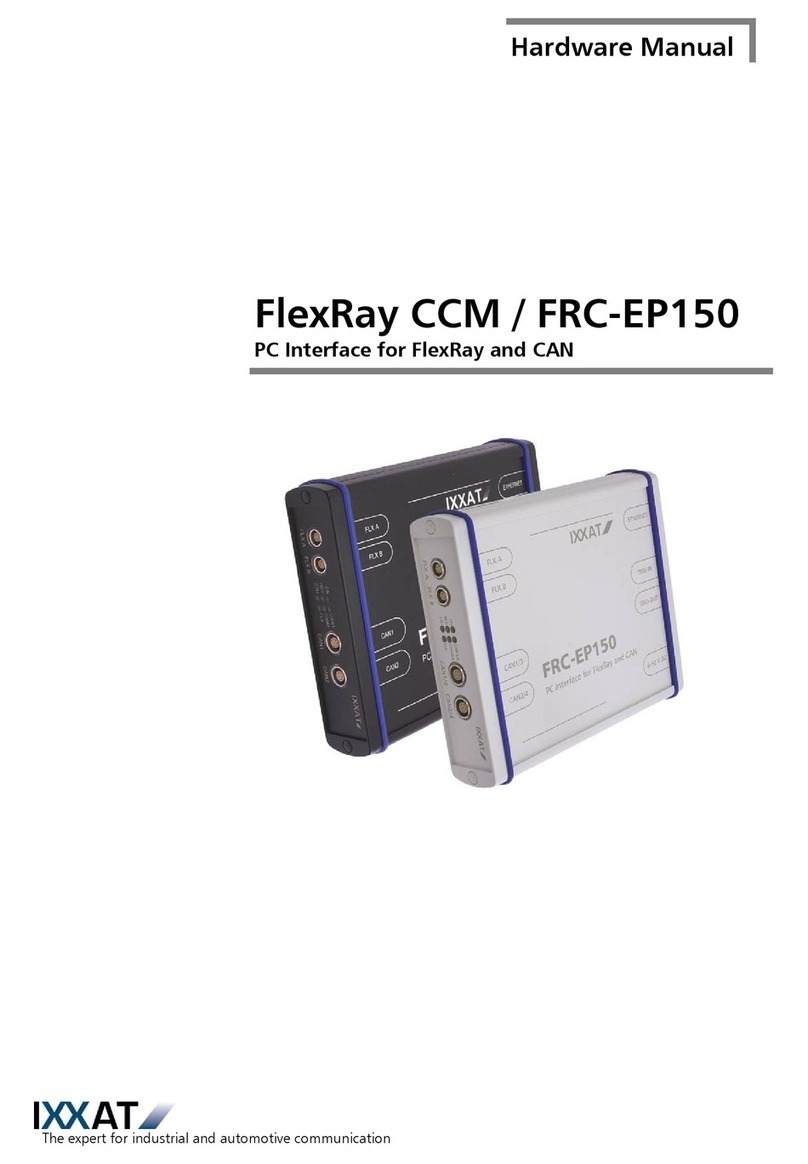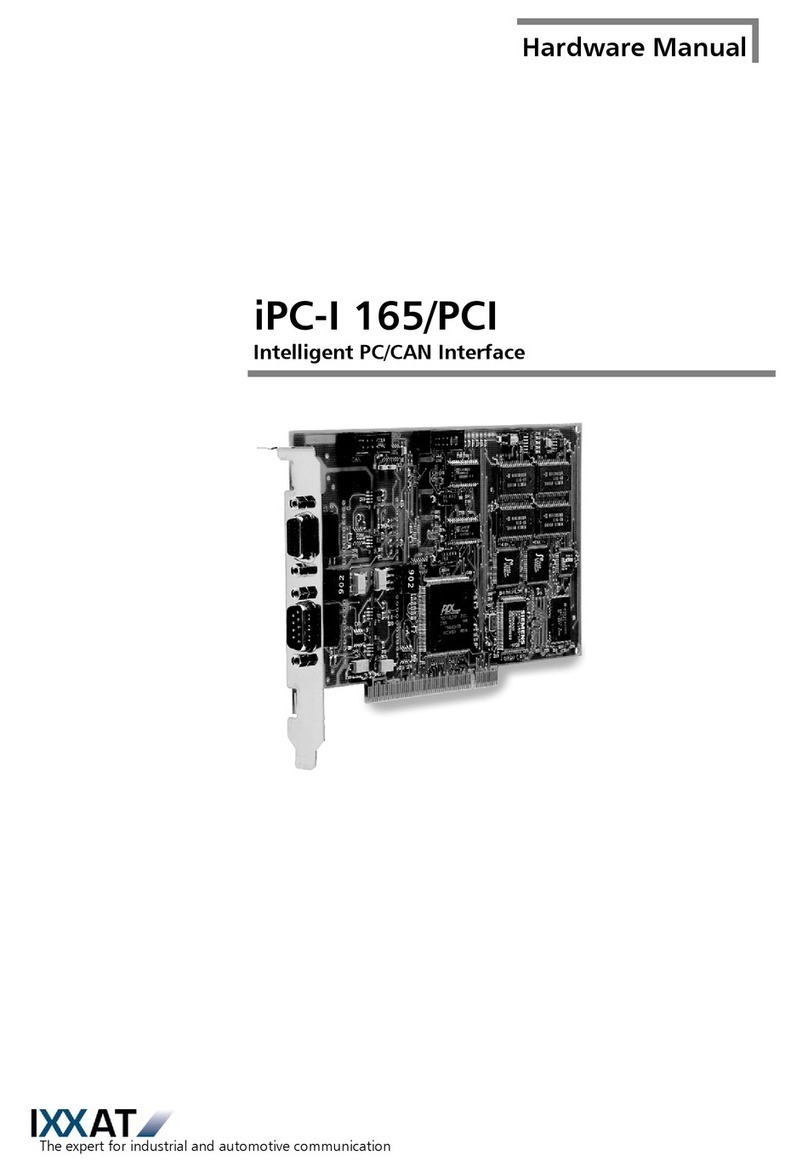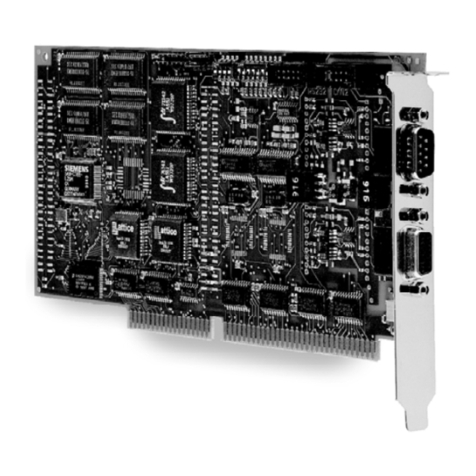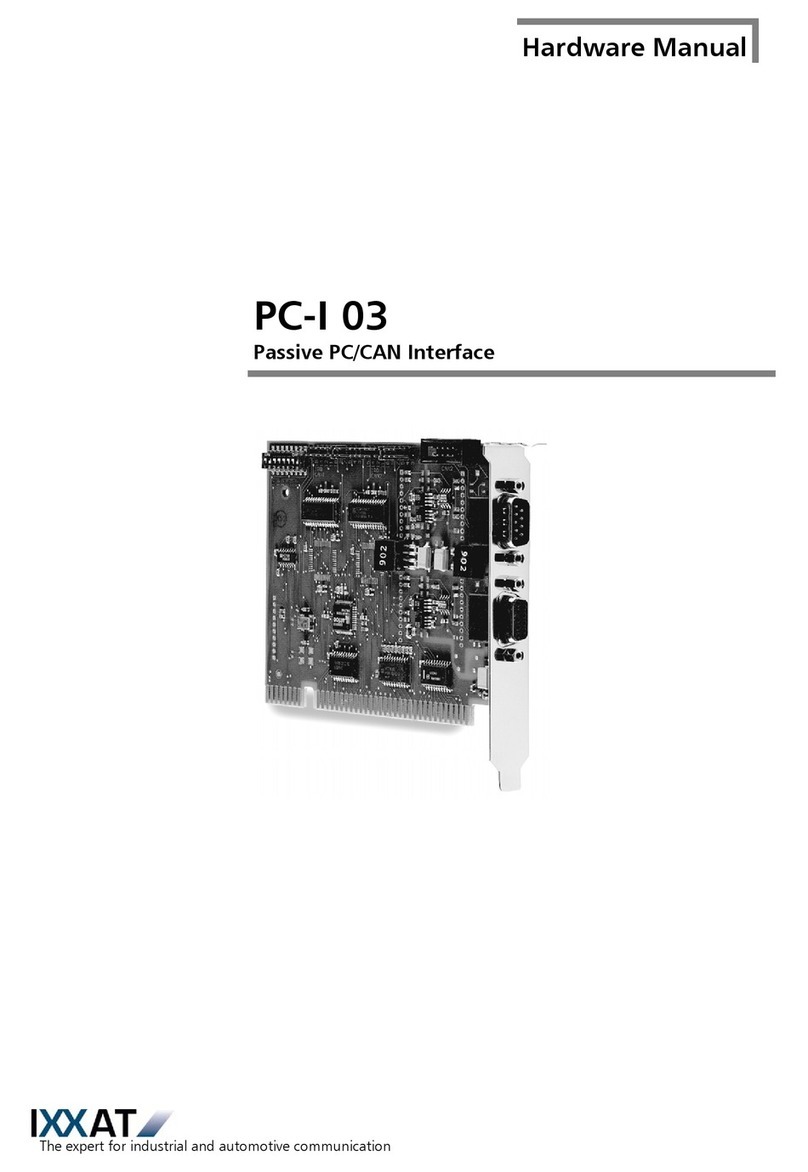
Copyright IXXAT Automation GmbH USB-to-CAN II - Manual, V1.5
Contents
3
1Introduction ..............................................................................5
1.1 Overview .............................................................................5
1.2 Features ..............................................................................5
1.3 Support...............................................................................6
1.4 Returning hardware............................................................6
2Installation.................................................................................7
2.1 Software installation ..........................................................7
2.2 Hardware installation .........................................................7
3Connections and displays..........................................................7
3.1 Pin allocation ......................................................................7
3.1.1 USB connector........................................................................... 7
3.1.2 CAN bus connector for CAN 1 ................................................... 7
3.1.3 CAN bus connector for CAN 2 ................................................... 8
3.1.4 Cable adapter RJ45 to Sub-D9M................................................ 9
3.2 Displays.............................................................................10
3.2.1 USB LED .................................................................................. 10
3.2.2 CAN LEDs (CAN1 and CAN2) ................................................... 11
3.2.3 CAN1 LS LED (only variant automotive).................................... 12
3.2.4 LIN LED (only variant automotive) ............................................ 12
3.3 CAN bus termination ........................................................12
3.4 LIN (only variant automotive)...........................................12
4Appendix .................................................................................13
4.1 Technical specifications.....................................................13
4.2 Accessories........................................................................14
4.2.1 CAN bus termination resistor ................................................... 14
4.2.2 Cable adapter RJ45 to Sub-D9M.............................................. 15
4.3 Notes on EMC ...................................................................15
Declaration of conformity .......................................................16
FCC Compliance.......................................................................17
